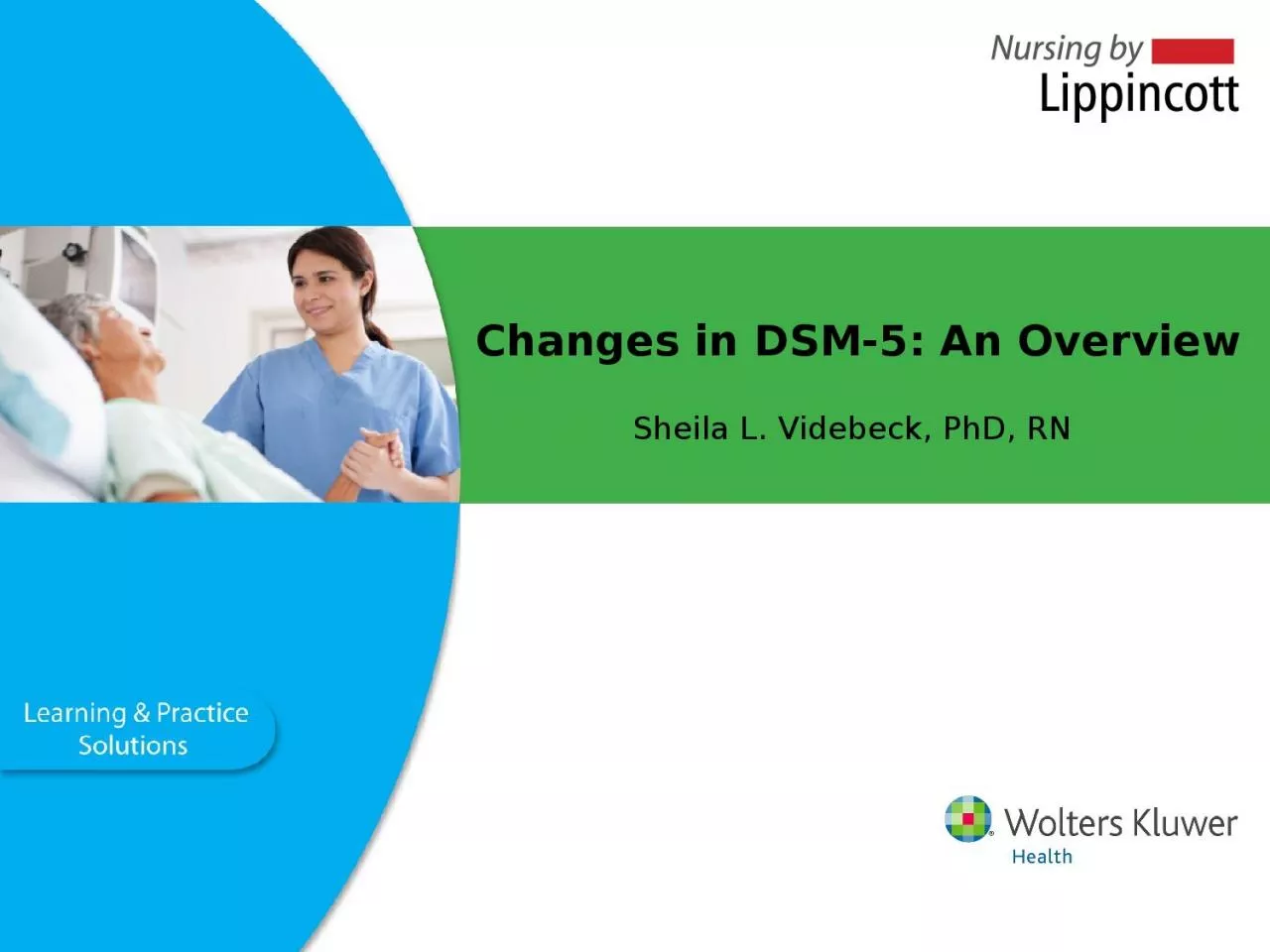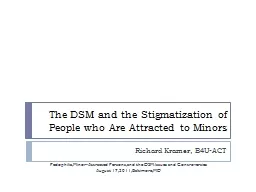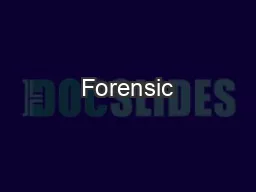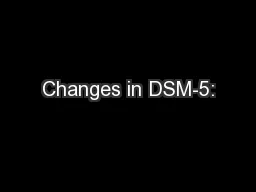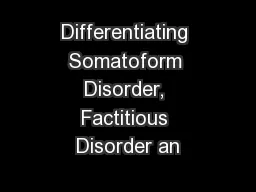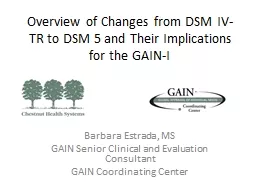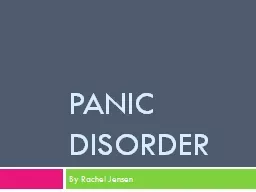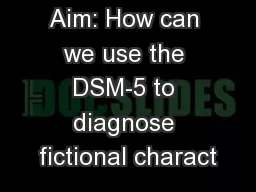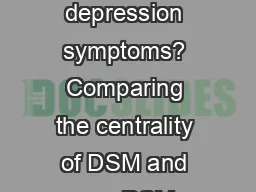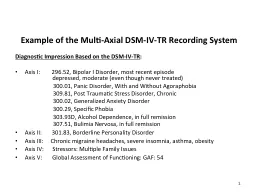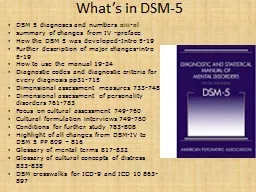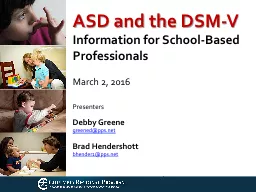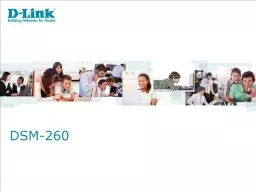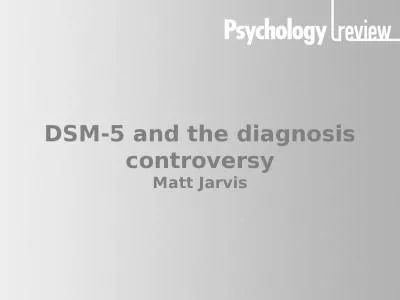PPT-Changes in DSM-5: An Overview
Author : jaena | Published Date : 2024-02-09
Sheila L Videbeck PhD RN The focus of this overview is major changes between DSMIVTR 2000 and DSM5 2013 Both organizational and conceptual changes in diagnoses
Presentation Embed Code
Download Presentation
Download Presentation The PPT/PDF document "Changes in DSM-5: An Overview" is the property of its rightful owner. Permission is granted to download and print the materials on this website for personal, non-commercial use only, and to display it on your personal computer provided you do not modify the materials and that you retain all copyright notices contained in the materials. By downloading content from our website, you accept the terms of this agreement.
Changes in DSM-5: An Overview: Transcript
Download Rules Of Document
"Changes in DSM-5: An Overview"The content belongs to its owner. You may download and print it for personal use, without modification, and keep all copyright notices. By downloading, you agree to these terms.
Related Documents

